The Best Plants for Your Bedroom (and How to Actually Keep Them Alive)
I’ve spent more years than I can count working with plants, from a life spent in commercial greenhouses to helping people bring greenery into their homes. Pretty early on, someone asked me to fill their bedroom with plants to help them sleep better. And honestly, it changed how I look at things. It’s not just about what looks good; it’s about what does good.
In this article
Lots of articles will just throw a list of plants at you. But a stressed, dying plant isn’t exactly going to create a restful vibe, right? The real magic happens when you understand why certain plants work best for a bedroom and how to care for them so they thrive. A healthy plant is like a quiet, green roommate that actually helps you relax.
So, this isn’t just another list. It’s my personal, no-nonsense guide to creating a bedroom that genuinely supports a good night’s sleep. We’ll get into the nitty-gritty of why these plants are great and how to keep them happy.

Your Quick Guide to Picking a Bedroom Plant
In a rush? Here’s the rundown. For anyone who tends to kill plants, the Snake Plant is your new best friend—it actually releases oxygen at night. If your room feels dry, especially in the winter, the Peace Lily is a humidity-boosting champ. And if you’re lucky enough to have a super sunny spot, a potted Lavender plant offers some incredible, all-natural aromatherapy.
By the way, people always ask, “How many plants do I need?” You don’t need to turn your room into a jungle. For a standard 12×12 foot bedroom, starting with two or three healthy plants is a fantastic way to see the benefits without feeling overwhelmed.
The Real Deal: How Plants Actually Affect Your Bedroom
To pick the right plants, it helps to know what’s going on behind the scenes. It’s not magic, it’s just some cool biology that you can use to your advantage.
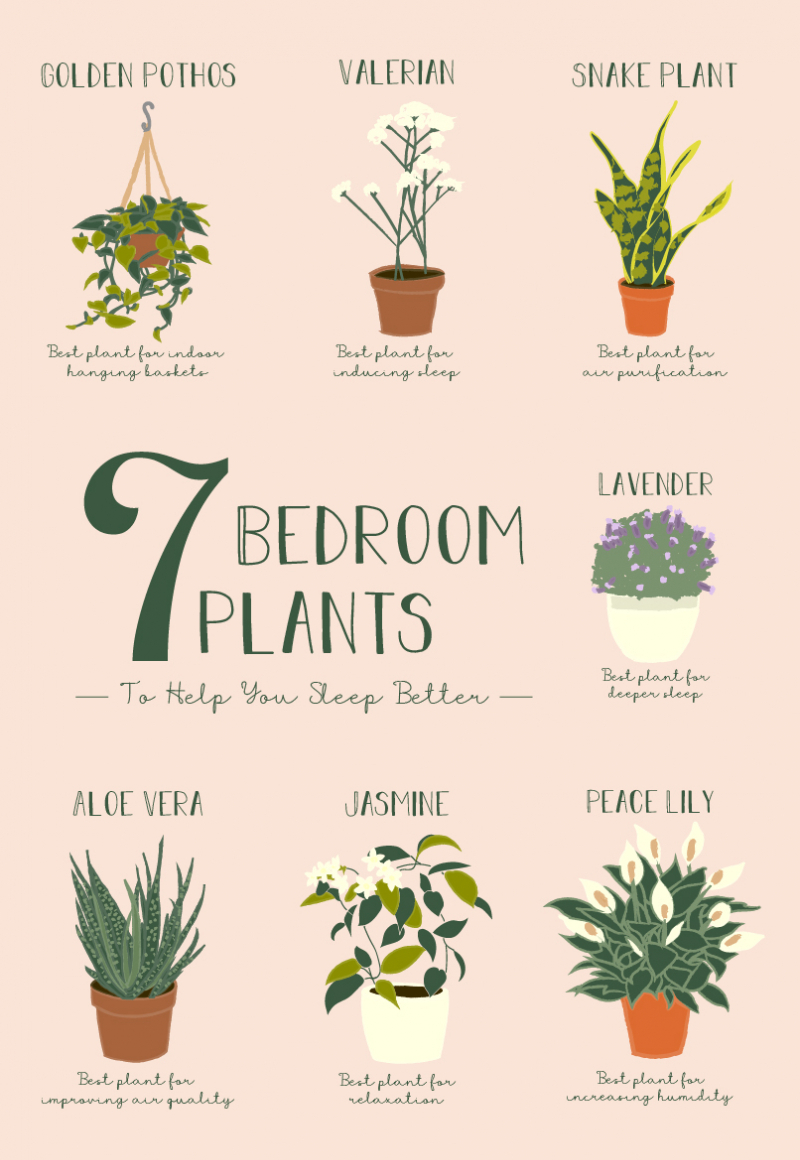
Nighttime Oxygen Boosters (CAM Plants)
Here’s a common worry I hear: “Won’t plants release carbon dioxide at night and steal my oxygen?” While most plants do respire at night like we do, the amount is so tiny it makes absolutely no difference in a normal room.
But here’s where it gets interesting. A special group of plants, often from desert climates, do the complete opposite. They’re called CAM plants, and they’ve cleverly adapted to their harsh environments. To avoid losing water during the hot day, they keep their pores closed. Then, at night, they open up to absorb CO2 and release oxygen. So yes, these plants are literally working the night shift to pump fresh oxygen into your room while you sleep. How cool is that?
Air Quality: The Truth About Plant Purification
You’ve probably heard about a famous study that showed plants can remove nasty chemicals—volatile organic compounds (VOCs)—from the air. Things like formaldehyde and benzene, which can be off-gassed from furniture, carpets, and cleaning supplies. And while that’s true, the context is key. Those tests were done in small, sealed lab chambers.
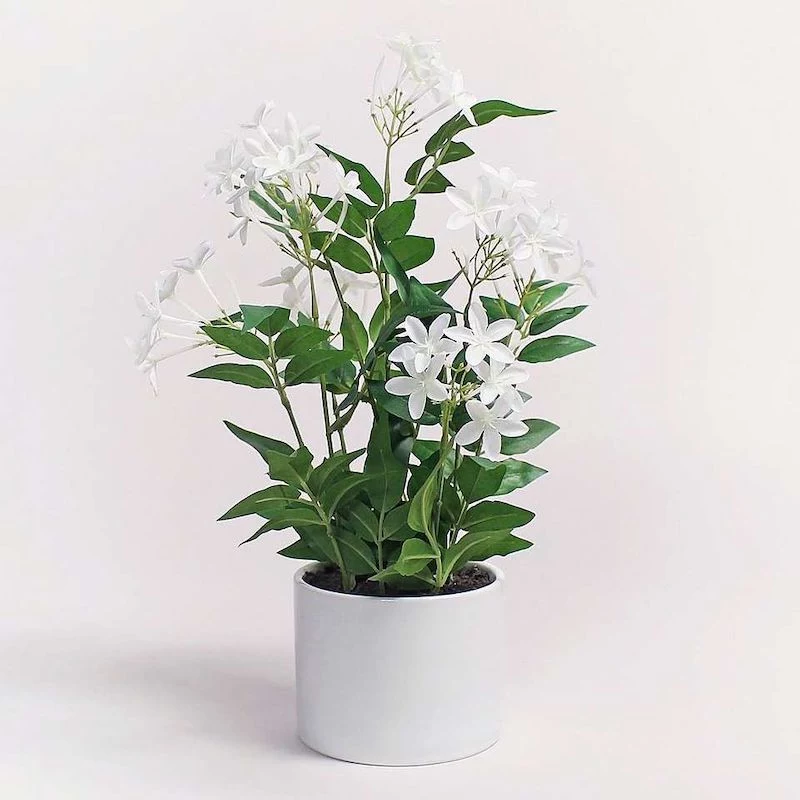
So, can plants really clean the air in your bedroom? Yes, but don’t go throwing out your HEPA filter. Think of them as gentle, constant background purifiers. Microbes in the soil and on the plant’s roots are the real heroes here, breaking down pollutants. While you’d need a forest in your room to match the lab results, having a few healthy plants definitely helps improve your overall indoor air quality.
Natural Humidifiers
Plants naturally release water vapor from their leaves—it’s called transpiration. This is a huge bonus in a dry room, especially when the winter heating is blasting. Keeping humidity between 40% and 60% can help with dry sinuses and sore throats, making it much easier to breathe comfortably. A plant with big, lush leaves is particularly good at this.
Heads up, though! In a small room with poor ventilation, too much of a good thing can happen. Excessive humidity can encourage mold. So, balance and a bit of airflow are your friends.
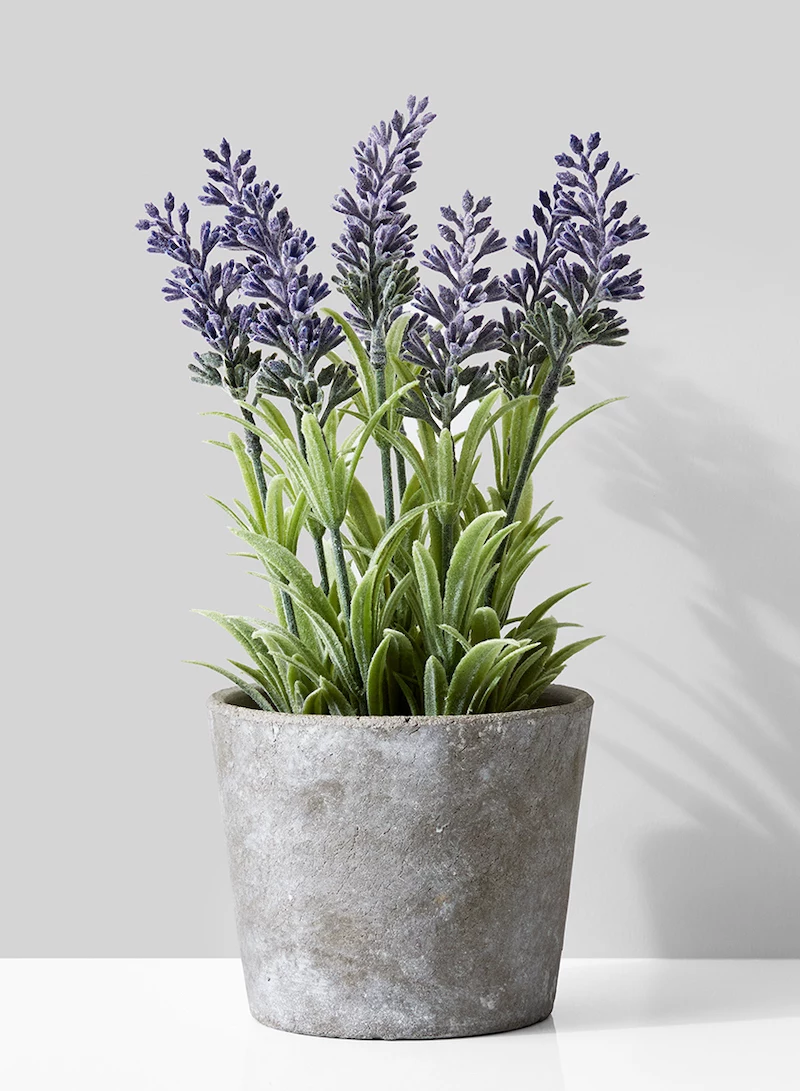
My Go-To Plants for a Restful Bedroom
Okay, let’s get to the good stuff. These are the plants I recommend time and time again. I’ve grown all of them myself and know their quirks. We’ll cover everything you need to know to make them feel at home.
Quick note on where to buy: Your local nursery often has healthier, better-cared-for plants and staff who can give you great advice. Big box stores like Home Depot or Lowe’s are great for budget-friendly finds, but inspect the plants carefully for pests or signs of stress. Online sellers are convenient but can be hit-or-miss with shipping.
1. The Snake Plant (The Unkillable One)
If you’re going to buy just one plant, make it this one. The Snake Plant is the definition of tough and reliable. It’s my top recommendation for beginners and busy people because it thrives on neglect. It’s basically the perfect bedroom plant.
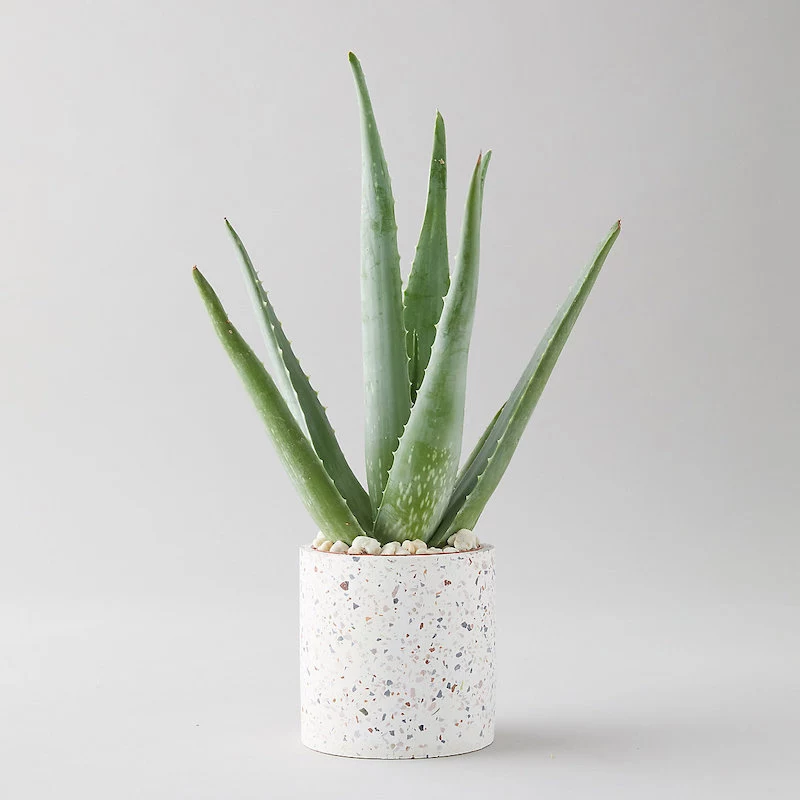
Why It’s Great for Sleep
The Snake Plant is a CAM plant, which means it’s that nighttime oxygen-releaser we talked about. It’s also a champ at filtering common household toxins like formaldehyde and benzene.
How to Keep It Happy
- Light: Famous for tolerating low light, but it secretly loves medium to bright, indirect light. What does that mean? Just a spot near a window where the sun’s rays don’t beat directly on the leaves for hours. An east-facing window is perfect.
- Watering: This is the #1 way people kill them—by being too nice. It’s a succulent, so it hates wet feet. Let the soil dry out completely. For most homes, this means watering only once every 3 to 6 weeks. Seriously. When you do water, soak it thoroughly until water runs out the bottom, then let it drain completely.
- Soil: Use a fast-draining cactus or succulent mix. If you only have regular potting soil, mix it with about 1/3 perlite to give the roots room to breathe.
- Common Mistake: Yellow, mushy leaves at the base mean you’re overwatering. It’s the most common problem. If you see it, you might need to repot in fresh, dry soil and trim off any mushy roots.
Time Commitment: Super Low. Check on it once a month.
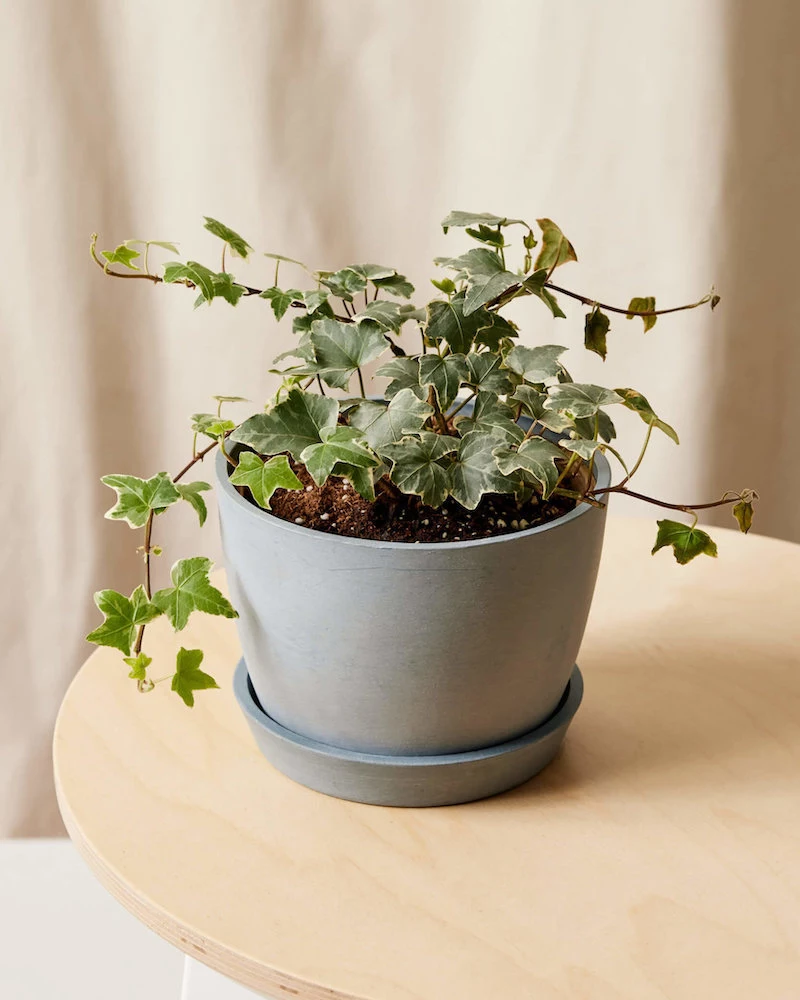
Shopping List:
– 4-inch to 6-inch Snake Plant: ~$15 – $30
– Bag of Cactus/Succulent Soil: ~$8
– Small bag of Perlite (optional but recommended): ~$7
Good to know: Snake Plants are mildly toxic to cats and dogs if they decide to chew on them, usually just causing an upset stomach. Best to keep it out of reach of curious pets.
2. The Peace Lily (The Drama Queen)
A Peace Lily brings a touch of lush, tropical elegance to a room. I love recommending this one because it’s a great communicator—it will literally tell you when it’s thirsty.
Why It’s Great for Sleep
This plant is a humidity powerhouse. Its big leaves release a good amount of moisture, which is amazing for soothing dry airways. It’s also great at filtering several VOCs, including ammonia from cleaning products.
How to Keep It Happy
- Light: Medium, indirect light is its happy place. It can handle lower light, but it won’t give you those beautiful white flowers. Keep it out of direct sun, which will scorch the leaves.
- Watering: You’ll know it’s thirsty when its leaves droop dramatically. Water it thoroughly, and it’ll perk back up in a few hours. Try not to let it wilt every single time, as it’s stressful for the plant, but it’s a great visual cue.
- Pro Tip: Peace Lilies can be sensitive to the chlorine in tap water, which causes brown, crispy leaf tips. A simple fix is to let your water sit out in an open container for 24 hours before using it. This allows most of the chlorine to evaporate.
- Soil: Any standard, well-draining potting mix will do just fine.
Time Commitment: Low to Medium. You’ll need to check the soil for dryness about once a week.
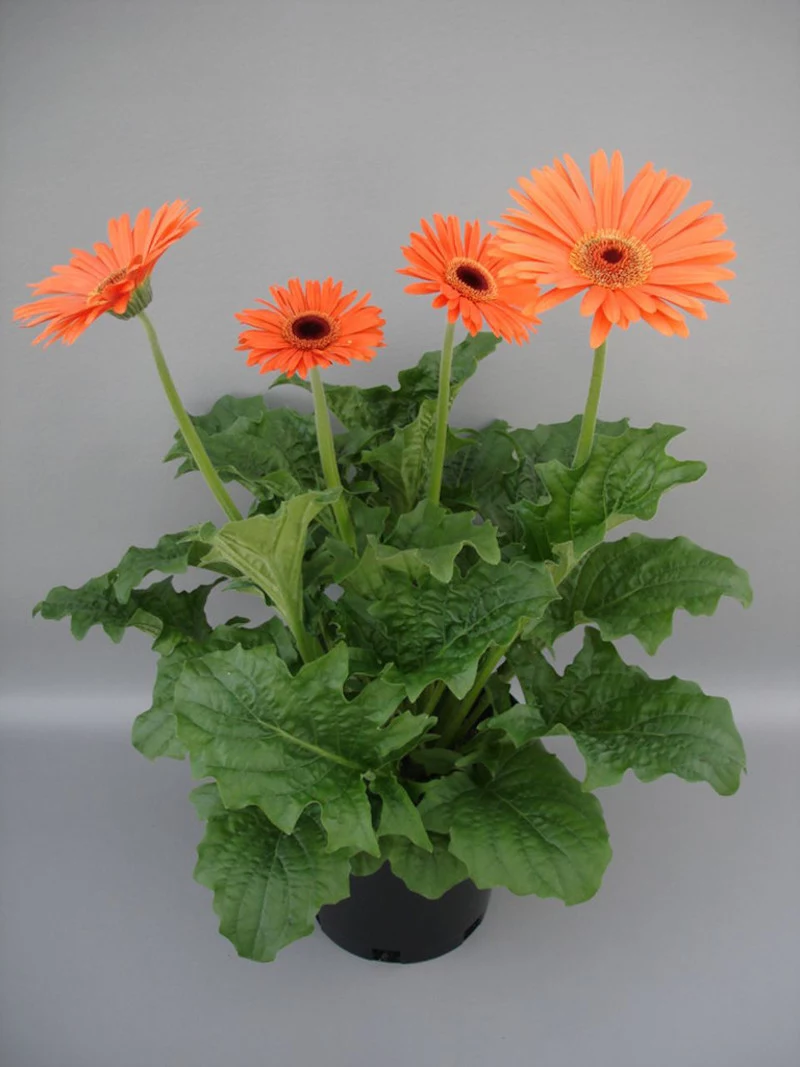
Shopping List:
– 6-inch Peace Lily: ~$20 – $35
– Bag of all-purpose indoor potting mix: ~$10
Heads up! The Peace Lily is toxic to both cats and dogs. It can cause serious irritation if chewed, so if you have pets that are nibblers, it’s best to either skip this one or place it somewhere they absolutely cannot reach.
3. English Ivy (The Mold Fighter)
To be frank, I have mixed feelings about recommending English Ivy for indoors. It can be a magnet for spider mites if you don’t give it what it wants. But its benefits are so impressive that it’s worth mentioning, with a few big warnings.
Why It’s Great for Sleep
Research from allergy specialists has shown that English Ivy can remove a stunning amount of airborne mold spores in a short time. For anyone with mold allergies, this is a huge potential benefit. Its trailing vines also look beautiful spilling over a bookshelf or from a hanging basket.
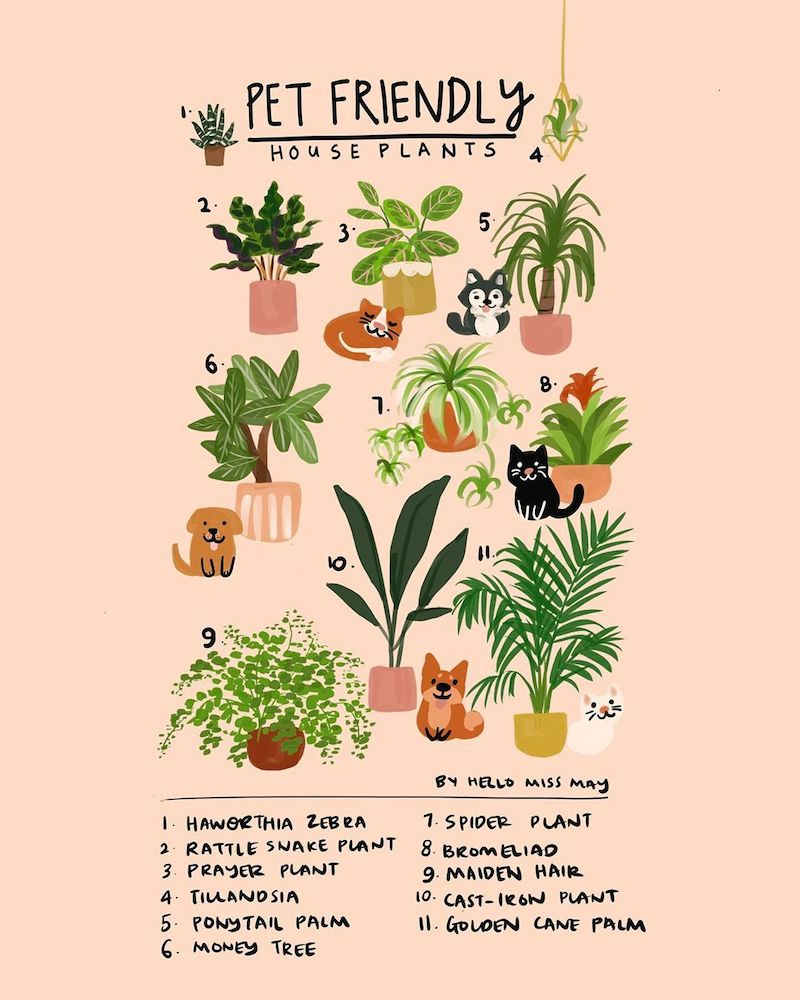
How to Keep It Happy
- Light: It needs bright, indirect light to thrive indoors. Not enough light is the main reason it gets weak and attracts pests.
- Watering: Keep the soil consistently moist but not waterlogged. This is a tricky balance that requires a bit of attention.
- The Secret to Success: Good air circulation and decent humidity are non-negotiable. A stuffy, dry room is a recipe for disaster (and spider mites). Misting it a few times a week or keeping it near other plants can help.
- Pest Watch: Check the undersides of leaves for fine webbing. If you see it, take the plant to the shower and give it a good spray-down, then follow up with some insecticidal soap. It takes persistence.
Time Commitment: Medium to High. This is not a set-it-and-forget-it plant. It needs weekly checks for water and pests.
Shopping List:
– 4-inch pot of English Ivy: ~$10 – $20
– Standard potting mix: ~$10
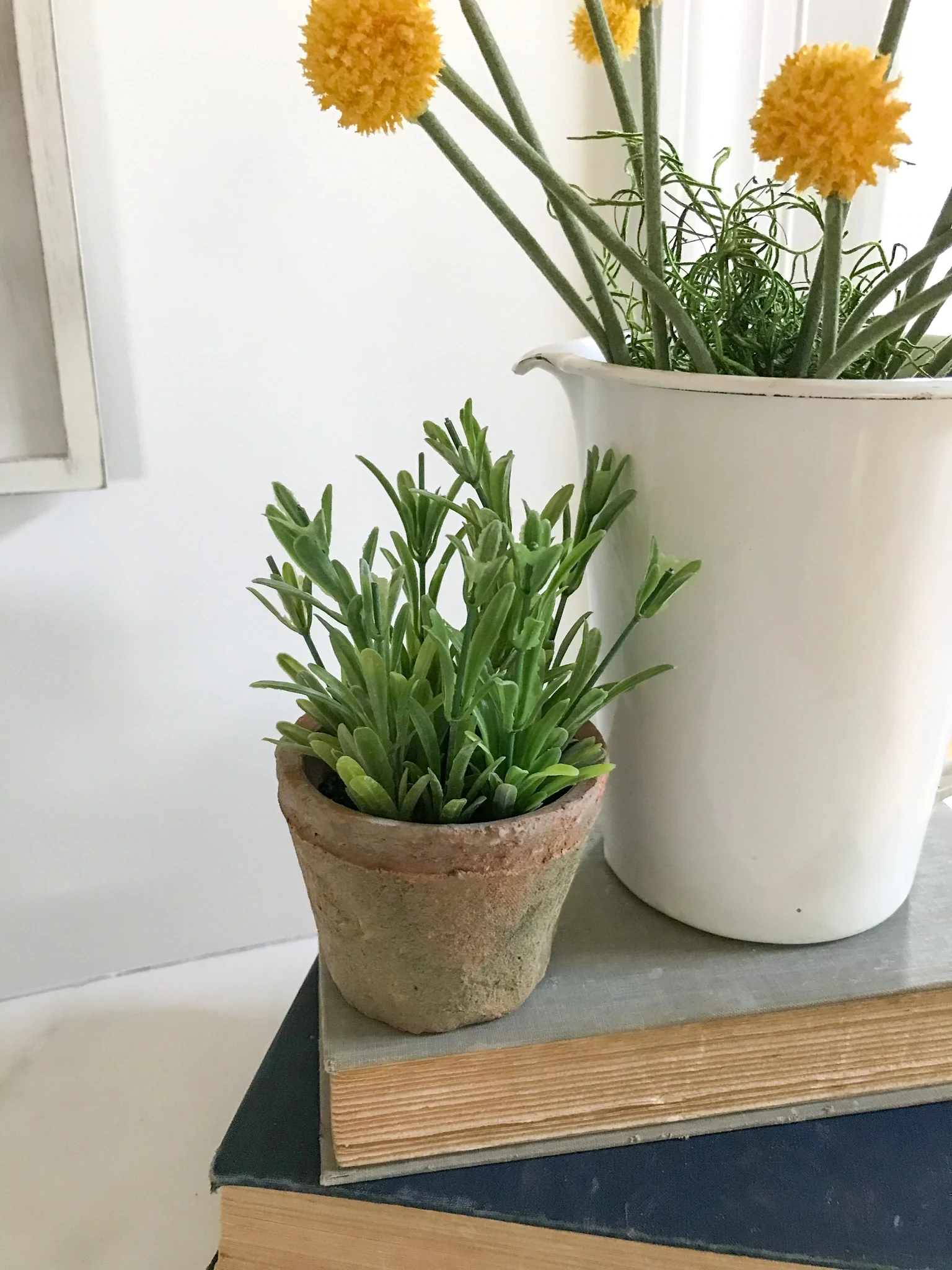
Heads up! English Ivy is toxic to pets and people if eaten. Given its pest-prone nature, I only recommend this one if you’re willing to be a hands-on plant parent.
4. Lavender (The Aromatherapy Challenge)
Bringing a lavender plant indoors is tough, but if you can pull it off, the reward is amazing. The scent of lavender is proven to slow the heart rate and reduce stress, helping you drift off to sleep.
Why It’s Great for Sleep
The benefit here is pure aromatherapy. The plant releases a gentle, natural scent that’s not overpowering. You’ll get a lovely whiff whenever you brush past the leaves.
How to Keep It Happy
- Light: This is the deal-breaker. Lavender needs a massive amount of direct sun. A south-facing window with at least 6-8 hours of direct sunlight is a must. Anything less and it will fail.
- Watering: It hates having wet roots. Use a terracotta pot that breathes and a very gritty soil mix. A good recipe is 2 parts cactus mix to 1 part coarse sand or fine gravel. Water deeply only when the soil is almost bone dry.
- Airflow: Good circulation is a must to prevent fungal problems. Don’t crowd it.
Let’s be real: Most homes just don’t have the perfect conditions to keep lavender happy long-term. It’s often better thought of as a long-lasting floral arrangement. If you don’t have that perfect sunny spot, you’ll be less frustrated using dried lavender sachets instead.
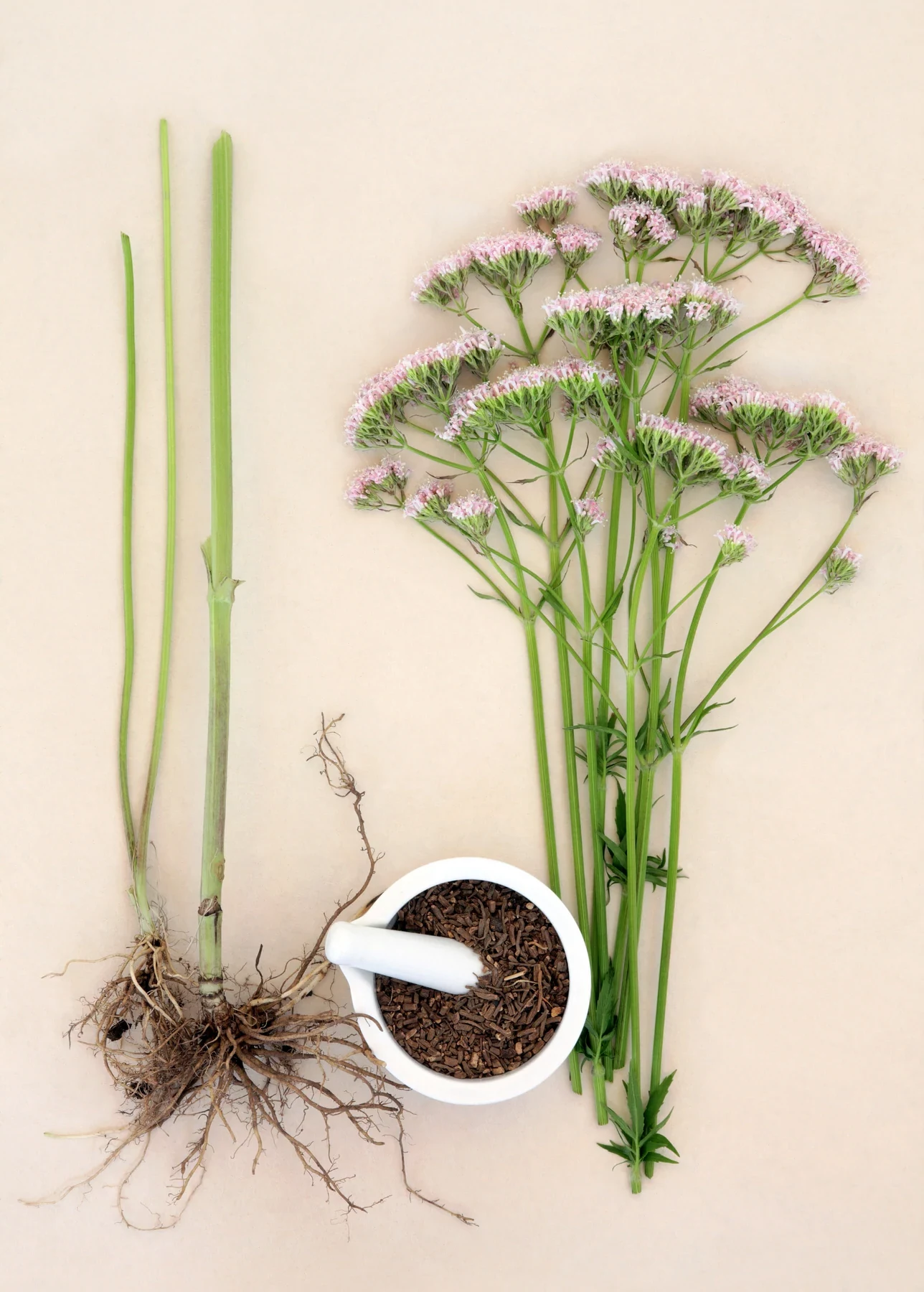
Time Commitment: High. Requires the perfect environment and careful watering.
Shopping List:
– 4-inch pot of Lavender: ~$10 – $15
– Terracotta pot, cactus soil, and sand/gravel: ~$25 total
5. The Spider Plant (The Giver)
The Spider Plant is a retro classic for a reason. It’s incredibly forgiving, a powerful air purifier, and it’s fun! It grows little baby plants, or “spiderettes,” that you can snip off and plant to make new ones. I’ve given away dozens over the years.
Why It’s Great for Sleep
Like the Snake Plant, it’s a top performer when it comes to filtering formaldehyde and xylene out of the air. It’s non-toxic to pets, making it a fantastic, worry-free choice for homes with furry friends.
How to Keep It Happy
- Light: It’s very adaptable but prefers bright, indirect light. Too much direct sun can scorch the leaves.
- Watering: Water it well, then let the top inch or two of soil dry out before watering again. They are pretty resilient if you forget once in a while.
- Troubleshooting: Brown tips are common on Spider Plants and are usually due to fluoride or chlorine in tap water. Just like with the Peace Lily, letting your water sit out overnight can help. Don’t worry too much about it—you can just snip the brown tips off with clean scissors.
Time Commitment: Low. Check it for water once a week, and it’s happy.
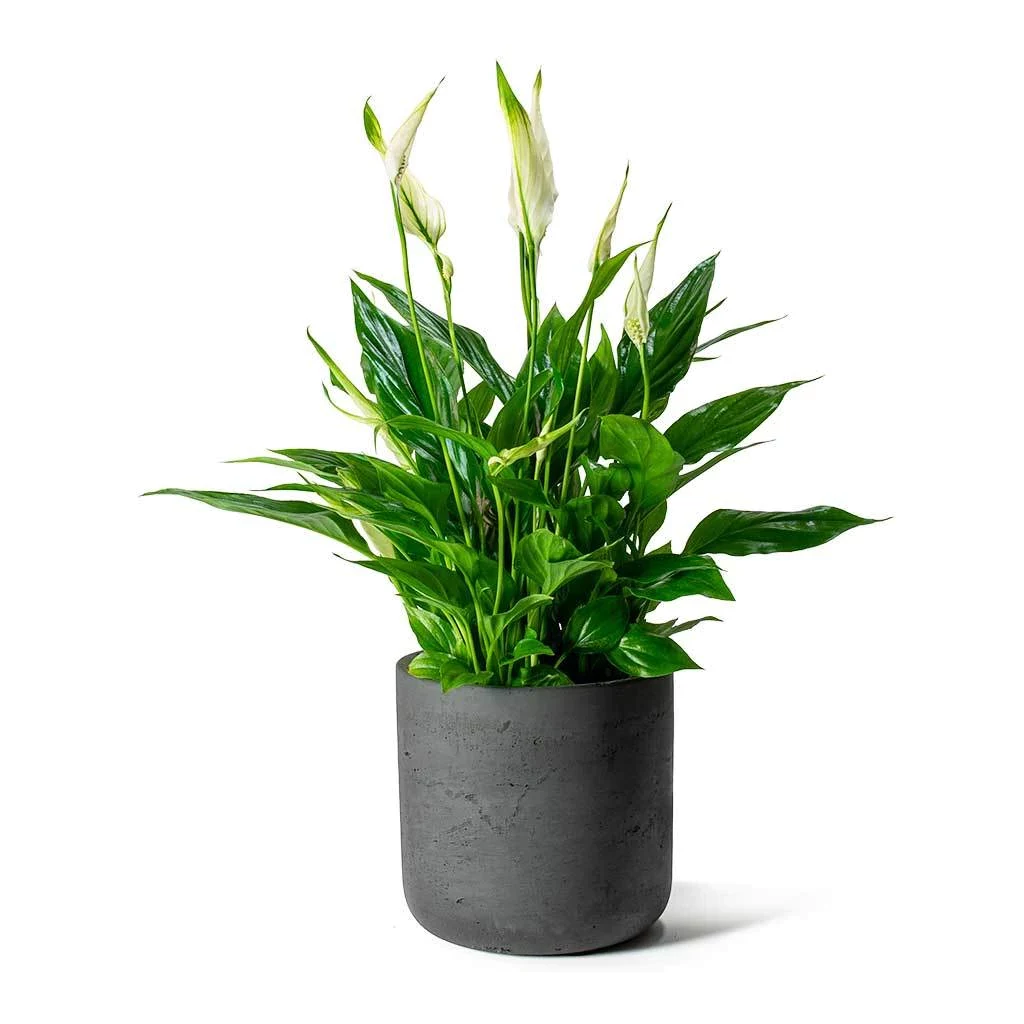
Shopping List:
– 4-inch Spider Plant: ~$15 – $25
– Bag of all-purpose indoor potting mix: ~$10
Good to know: This is probably the safest and most generous plant on the list. If you want greenery in a home with curious pets and kids, this is a top-tier choice.
Inspirational Gallery
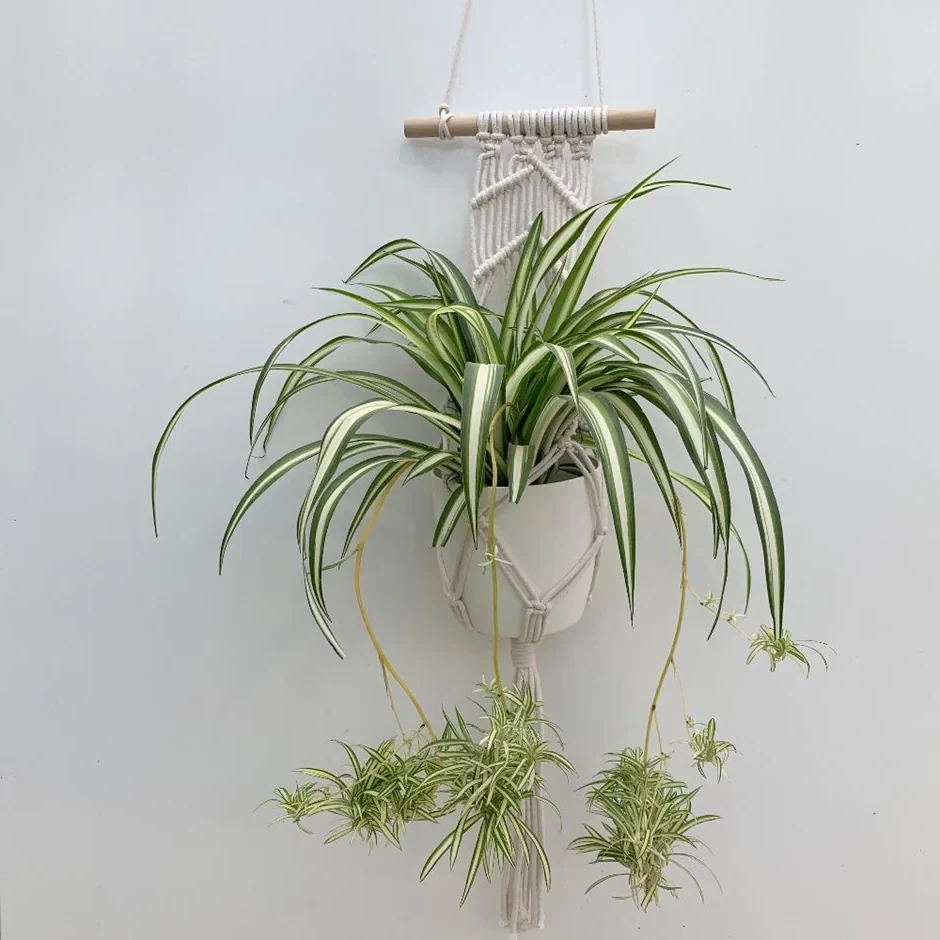
How do I choose the right pot for my bedroom plant?
Beyond aesthetics, the pot you choose directly impacts your plant’s health and your care routine. Classic terracotta is porous, allowing soil to dry out faster, which is a lifesaver for drought-tolerant species like Snake Plants or ZZ Plants. For plants that prefer consistent moisture, like a Calathea or Fern, a glazed ceramic or a non-porous plastic pot (often found as an inner liner in decorative planters from brands like Crate & Barrel) is a better choice as it retains water much longer. Always ensure your chosen pot has a drainage hole to prevent waterlogged roots, the number one cause of an unhappy plant.










